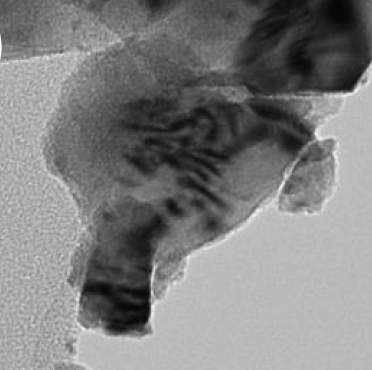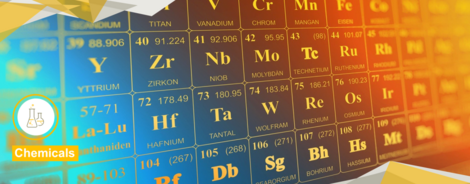One Small Step for a Laboratory, One Giant Leap Toward a Model Region for Hydrogen

Chemists at the Martin Luther University Halle-Wittenberg in Saxony-Anhalt have discovered how electrodes can be improved in the future using an innovative process. The method could enable materials to withstand the variable conditions that come with the use of renewable energy, helping to simplify the production of green hydrogen.
Saxony-Anhalt has declared its aim to become a model region for hydrogen. Chemists at the Martin Luther University Halle-Wittenberg have now taken a step toward achieving this aim – a small step for now, but one that has the potential to lead to great things. They treated materials for electrodes using an innovative process that will allow electrodes to cope with the requirements of dynamic conditions in power supply from renewable energy in the future.
Enhancing the materials
Alkaline water electrolysis, which is required for the production of hydrogen, has been used in industrial applications for decades. “It works very well under constant conditions,” explains Prof. Michael Bron from the Institute of Chemistry at the university. “However, current systems are not suitable for the variation that comes with using renewable energy.” The electricity from the sun and wind is available in varying cycles; it would reduce the durability of the materials used, which would quickly lose their activity. “We have enhanced the material so that it can withstand these conditions during electrolysis.”
There are highly active catalysts available, such as iridium and platinum, that are better at dealing with a variable energy supply, but they are more expensive. Nickel hydroxide is a more reasonably priced alternative. In order to increase its stability, the material is normally heated to around 300°C, which partially converts it into nickel oxide. Higher temperatures destroy the hydroxide, however, and lead to damage.
The chemists in Prof. Bron’s team went a step further. They heated the material to temperatures as high as 1,000°C in the laboratory and observed the changes under an electron microscope. Then the unexpected happened: the particles were converted into nickel oxide and their structures were enlarged. It was assumed that the material was unsuitable for electrolysis in this condition because, until now, smaller structures were understood to be more active. It then emerged, however, that the particles remained just as active even after they had been heated to a high temperature. This effect evidently only occurs noticeably at very high temperatures. The scientists have identified active oxide defects in the particles as the cause.
Increased efficiency
The effect that Prof. Bron’s team of scientists had discovered was still evident even after 6,000 cycles: the heated particles were still generating 50% more electricity than the untreated particles. “Efficiency was greater and the material’s stability was also much better,” confirms Bron. Electrodes treated in this way are therefore highly suited to large-scale industrial application in the production of green hydrogen.
Of course, the high-temperature stage necessary to achieve this must first be carried out by industrial manufacturers of electrolysis systems, as the university can perform it only on a small scale. Prof. Bron says that company research and development departments, at start-ups or at the Fraunhofer Institutes, now need to get on the case. “Electrolyzers are established systems; I don’t think we need to do a great deal more research because we are already familiar with the materials.” He estimates that the processes could be carried out on a larger scale in as early as one year’s time.
One step closer to Saxony-Anhalt’s aim
This would help Saxony-Anhalt progress toward its aim of becoming a model region for hydrogen. There are already many other development projects underway as Saxony-Anhalt strongly believes in the power of this environmentally friendly source of energy. An innovative strategy for bringing about an energy transformation at town level is being tested in the Energieregion Staßfurt (Energy Region of Staßfurt), the Hydrogen Factory of the Future is being developed in Magdeburg and the railroad technology alliance TRAINS is developing a green railcar in the region of Anhalt. In addition to this, salt caverns in the Bad Lauchstädt Energy Park are to be used as high-volume storage space for hydrogen. There are also projects in progress to exploit the great potential of hydrogen as an energy source, a means of energy storage and as a sustainable raw material for the chemical industry. For example, Saxony-Anhalt is supporting the construction of two unique pilot plants at the Fraunhofer Center for Chemical-Biotechnological Processes CBP at the Leuna Chemical Park with more than eight million euros provided by the EU and the state government. This is where the electrolysis technology will be further developed for use on an industrial scale and where green hydrogen will be used as a raw material.
Author: Anja Falgowski/IMG Saxony-Anhalt
HERE the chemistry is right.

Traditionally, Saxony-Anhalt offers the complete value chain from basic chemicals to the processing industry. In the fields of polymer synthesis, agrochemicals as well as fine and specialty chemicals, the state has developed into a leading competence center. A distinctive raw materials network, supported by the state's 5 chemical parks, creates profitable synergy opportunities.
